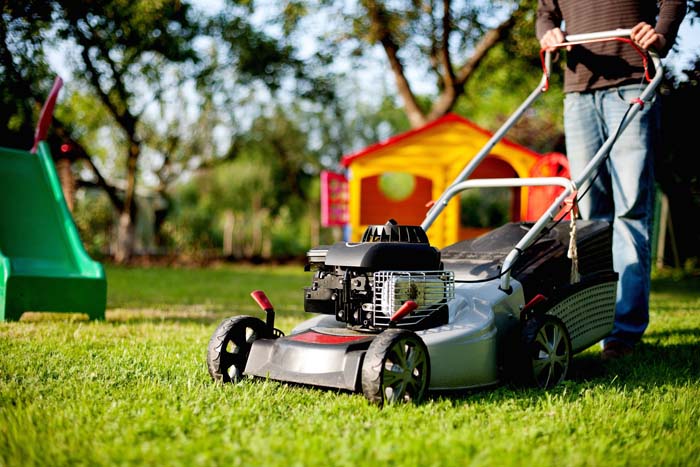It’s almost spring-time in the landscape!
Published 1:30 pm Tuesday, March 7, 2023

- MERRILY WE MOW ALONG: Mowing helps determine the health of the lawn. It is important to set the mower at the appropriate height, depending on the type of grass.
“March brings breezes loud and shrill. Stirs the dancing daffodil.”- Sara Coleridge
Trending
“It was the second week in March . . . The magnolia trees had already bloomed, and tulips, daffodils, and wildflowers were shooting up all around the convent’s gardens.”- Rosanna Chiofalo
“In March winter is holding back and spring is pulling forward. Something holds and something pulls inside of us too.”- Jean Hersey
“Indoors or out, no one relaxes in March, that month of wind and taxes, the wind will presently disappear, the taxes last us all the year.”- Ogden Nash
Each day of March invites us to the great outdoors, whether for relaxation, recreation, or chores. Thus, while your outside – prune your roses and lantana, practice late winter and early spring clean-ups, and spray lawns with pre-emergent herbicides for weed control. It’s almost spring time! It’s lawn time! What do lawns need? Let’s review lawns and their seasonal needs through the basic cultural practices of mowing, irrigation, and fertilization.
Mowing: Mowing is a very critical cultural practice that helps determine the health of the lawn. Be sure to set the mower at the appropriate height and keep it serviced and stored properly for a longer life. Lawns in this area consist of either centipedegrass, St. Augustinegrass, zoysia, or bermudagrass as favorites. However, some yards have evolved offering simply a green color with a conglomerate of existing stands of bahiagrass, carpetgrass, and common bermudagrass sharing the same space with a dab of centipedegrass or St. Augustinegrass or zoysia (survival of the fittest in action). This latter choice is least appreciated with minimal curb appeal but does offer some degree of greenery and erosion protection.
Mow centipedegrass at 1.5 to 2.5 inches, St. Augustinegrass at 3.0 to 4.0 inches, zoysia at 1.0 to 2.0 inches and bermudagrass at 0.75 to 1.5 inches depending on the cultivar. The yard conglomerate can be mowed at 2.0 to 4.0 inches. The main problem associated with mowing is scalping, or mowing too closely and damaging the crown of the plant. And when you scalp your lawn, it is weakened or killed and weeds move in real fast.
Trending
Irrigation: Another critical cultural practice is irrigation or the application of water to our plants for their good health. Irrigate your lawn with approximately one-inch of water each week on the average. Centipedegrass may require less while zoysia, St. Augustinegrass, and bermudagrass may require a bit more. Keep your irrigation systems calibrated and serviced for best results to minimize overspray, wrongful spray, puddling and runoff. Do not water driveways, sidewalks, streets, and the walls of houses and buildings. We know this but improper irrigation head placement, size, calibration, or service can waste water in such ways.
These systems are made of plastic materials and they will wear away with time and use. Replace parts and nozzles as needed. Keep your smart controller working properly. The best time to irrigate is between 4am and 9am in the morning to minimize diseases, evaporation and activity interference. Never apply more water at any one time than the soil can absorb. In other words, the application rate should always be at or below the infiltration rate into the soil.
Also, properly irrigate your trees, shrubs and flowers. These plants will need between 1 and 2 inches of water each week of the growing season depending on the particular plant. Hopefully, your irrigation system has been designed so that these plants are watered separately from the turfgrasses. Otherwise, you will always have problematic areas either in the lawn or beds depending on which area you focus your application rates. However, if you have used xeriscaping approaches and sustainable strategies then you should have minimum problematic issues and areas.
Fertilization: The third critical cultural practice is fertilization or the application of nutrients for our plants survival. Seek out the proper answers to your specific plant materials as to specific fertilizers, timing and rates. Always conduct a soil test to determine what’s already there so that you do not create toxic conditions, environmental hazards, or waste.
A soil test is to your plants as your diet review and physical checkup are to you. Soil test for pH, phosphorus, potassium, calcium, magnesium, sulfur, manganese, iron, molybdenum, zinc, and other micronutrients. Soil tests do not include nitrogen due to the mobility of this nutrient. All nitrogen recommendations are based on the needs of each particular plant species. If you need to know existing nitrogen levels, then a tissue analysis for nitrogen content of the leaves would be conducted. Private and public (university extension service) labs are available to conduct your soil tests for a nominal fee.
When you make an application of fertilizer, understand the difference between active ingredient and commercial formulation. For example, a 50 pound bag of 13-13-13 has 50 pounds of commercial formulation, but only 19.5 pounds of active ingredient since it has 13% nitrogen, 13% phosphorus and 13% potassium. The remaining 30.5 pounds are inert ingredients or filler and carrier.
For centipedegrass, fertilize at a rate of 0.5 pounds of active ingredient nitrogen per one thousand square feet (ie, an area 10 feet wide and 100 feet long). This would compute to 3.8 pounds of 13-13-13 for every one thousand square feet (ie, it takes 7.6 pounds of 13-13-13 to get one pound active ingredient nitrogen and one-half of that is 3.8 pounds or 100% divided by 13% divided by 2). Just a quick lesson in basic math to help you better understand the numbers. One application per year in the spring should suffice on your centipedegrass lawn.
For St. Augustinegrass, zoysia and bermudagrass, fertilize at a rate of one pound of active ingredient nitrogen per one thousand square feet in the spring and followed by another application in midsummer. Do not apply fertilizer too late in the season (near fall) since late applications would encourage new growth that could become damaged from early cooler weather, thus reducing the health of the grass.
For trees, shrubs and flowers, select the appropriate specialty fertilizer of choice to feed your plants (ie, rose fertilizer, camellia fertilizer, azalea fertilizer, perennial fertilizer, annuals fertilizer, etc.). For other plants, select a general fertilizer and follow recommendations on each particular species. Know the fertilizer requirements of plants and make every effort to accommodate this need based on what is already there in the soil (from soil test) and supplementing the difference with the necessary commercial formulation.
Always water your fertilizers into the lawn or around plants after application with approximately 0.5 inch of water. Make every effort to keep your grasses and plants slightly on the thirsty and hungry side. Do not starve or dehydrate them but encourage them to put out roots looking for food and water. Otherwise, if you keep them wet and overfed, you’ll end up with a bunch of “couch potatoes” out there in your landscape disguised as “wanna-be” turf, trees, and shrubs and you will experience high losses during droughts due to shallow root systems.
“As far as the east is from the west, so far has He removed our transgressions from us.” Psalm 103:12. “Salvation is found in no one else, for there is no other name under heaven given to men by which we must be saved.” Acts 4:12. “He is the image of the invisible God, the firstborn over all creation.” Colossians 1:15. “It is not good to have zeal without knowledge, nor to be hasty and miss the way.” Proverbs 19:2. “We know also that the Son of God has come and has given us understanding, so that we may know Him who is true. And we are in Him who is true — even in His Son Jesus Christ. He is the true God and eternal life.” 1 John 5:20.





